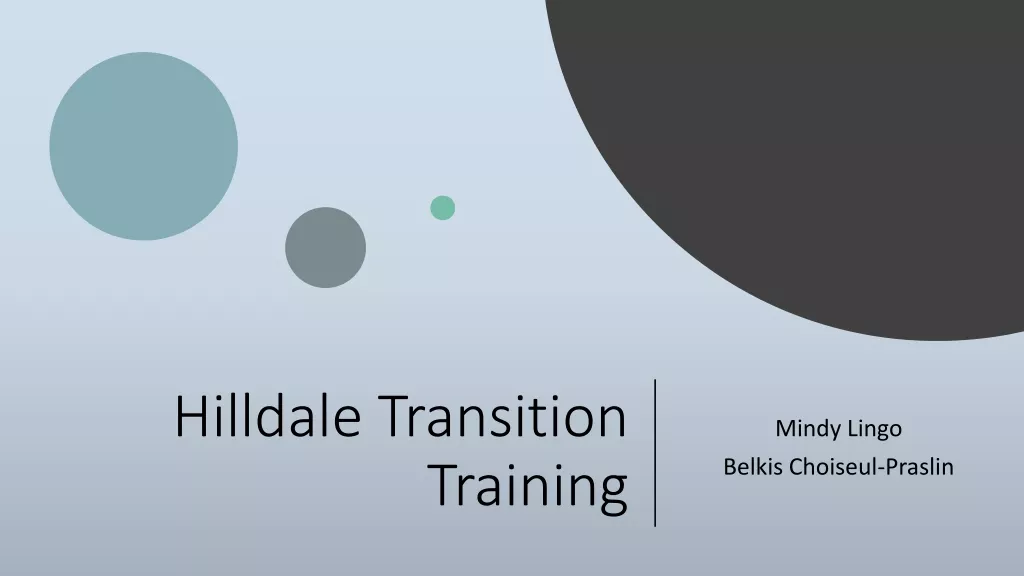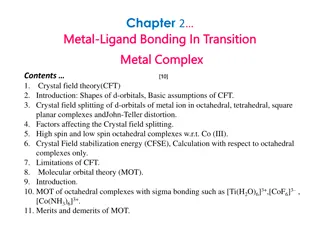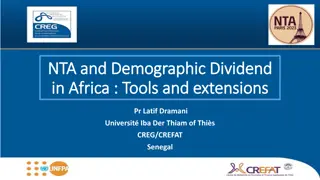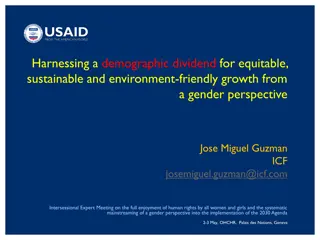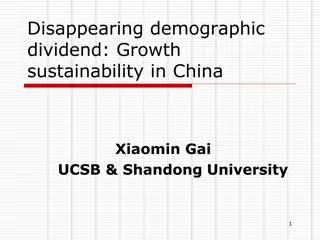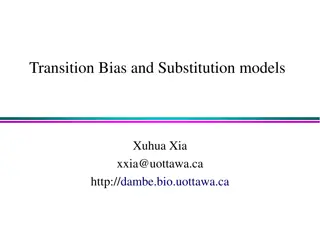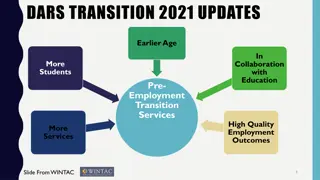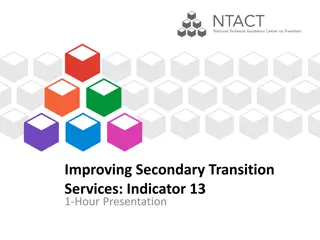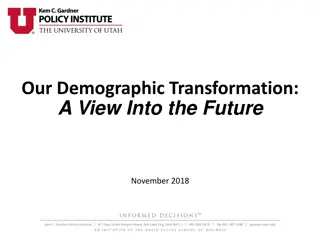
Demographic Transition Model Stages
Explore the stages of the Demographic Transition Model proposed by Warren Thompson in 1929. From Pre-Transition with high birth and death rates to Low-Stationary with stable population growth, each stage reflects societal advancements impacting population dynamics. Learn how factors like healthcare, education, and urbanization influence demographic changes.
Uploaded on | 2 Views
Download Presentation

Please find below an Image/Link to download the presentation.
The content on the website is provided AS IS for your information and personal use only. It may not be sold, licensed, or shared on other websites without obtaining consent from the author. If you encounter any issues during the download, it is possible that the publisher has removed the file from their server.
You are allowed to download the files provided on this website for personal or commercial use, subject to the condition that they are used lawfully. All files are the property of their respective owners.
The content on the website is provided AS IS for your information and personal use only. It may not be sold, licensed, or shared on other websites without obtaining consent from the author.
E N D
Presentation Transcript
The Demographic Transition Model, proposed in 1929 by the American demographer, Warren Thompson, is based on his observation of population growth in industrialized societies over the previous 200 years
Stage 1: The first stage is called pre-transition, high- stationary stage. In this stage the birth and death rates are both high and roughly in balance over time, but may fluctuate nominally due to natural events such as good harvest, or, widespread drought and disease. This results in a stationary population which is relatively constant or grow slowly. This stage is characteristic of a pre-industrialized society. Most people live in rural areas. Agriculture is the main occupation. Economy is backward. Tertiary sector such as transport, commerce are underdeveloped. Illiteracy and poverty is widespread. Food supply is a major constraint to population growth.
Stage 2: The second stage is called Early Expanding stage. In this stage death rate falls sharply but the birth rate remains high resulting in a steady and high population growth rate. The decline in death rate or mortality in Stage two is due to the following factors: improved health care (e.g., smallpox vaccine in Europe), improved hygiene (boiled drinking water) and sanitation, improvements in supply, storage and transportation of food through advances in techniques (crop rotation, selective breeding). However, the birth rate continues to remain high or decrease at a slow rate
Stage 3: This stage is called the Late-Expanding stage. This stage is characterized by a significant decline of birth rates, while the decrease of death rate slows down. Consequently the population continues to grow but at a slower rate. The decrease in birth rates is mainly due to the following factors: improvement of economy and spread of education & employment particularly among women, as well as, improvements in access to family planning knowledge and techniques. Also reduction in child mortality, improved economy and higher income changed the perception of requiring more children for increasing family income. Urbanization also makes rearing more children costlier.
Stage 4: This stage is called Low-Stationary stage. It occurs where birth and death rates are both low, with the birth rate tending to catch up with the death rate, resulting in a total population which is high and stable. At times, the birth rates may drop below the replacement level causing the population to shrink. Death rates start to level off because advanced medical practices with higher accessibility tend to get compensated by increase in lifestyle diseases due to lower physical activity, over consumption of hazardous food and increasing pollution, as well as increase in the ageing population from Stage Two. Birth rate continues to fall because of wider practice of family planning, and increase in independence and work opportunities for women making child bearing and rearing difficult.
Stage 5: Some scholars have proposed a fifth stage in addition to the original Demographic Transition Model with four stages. It is referred to as the Declining Stage, in which the birth rate drops below the death rate causing the population to decline. Many European and East Asian countries show this trend, for example Germany, Italy
Demographic Transition Model This model provides general description of the changing BR and DR Stage I High stationary growth High BR and DR, few African regions south Sudan, Ethiopia Stage II Stage of Early Expanding Growth -High BR and DR fall rapidly, Sub Saharan nations Malawi, Niger, Uganda, Qatar Stage III Stage of late Expanding Growth Fall in BR and DR fall slowly India, Bangladesh, Sri Lanka Stage IV Stage of Low Stationary Growth Low BR and DR China, USA, UK, France Stage V Stage of population decline BR very low and DR low Germany, Japan, Norway
To conclude the theory of demographic transition is the most acceptable theory of population growth. The model has explained human population evolution relatively well in Europe and other highly developed countries. However, this is an idealized suggestive model and may not accurately describe all individual cases. Many countries such as China, Brazil and Thailand have passed through the first two or three stages quickly as a result of fast social and economic changes. Some countries, particularly in Africa and Middle-East are in the second stage due to stagnant development

